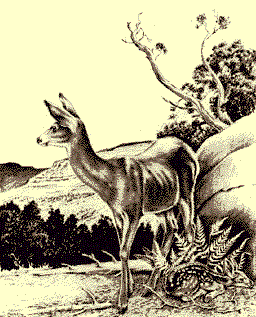 | ||
Thinking like a mountain by aldo leopold
Thinking like a mountain is a term coined by Aldo Leopold in his book A Sand County Almanac. In the section entitled "Sketches Here and There" Leopold discusses the thought process as a holistic view on where one stands in the entire ecosystem. To think like a mountain means to have a complete appreciation for the profound interconnectedness of the elements in the ecosystems. It is an ecological exercise using the intricate web of the natural environment rather than thinking as an isolated individual.
Contents
- Thinking like a mountain by aldo leopold
- Thinking like a mountain
- Origins of the term
- Examples in antiquity
- Contemporary examples
- Books
- Film
- Music
- References
Thinking like a mountain
Origins of the term
Aldo Leopold first came up with this term as a result of watching a wolf die off. In those days of Leopold’s adventures, no one would ever pass up killing a wolf because fewer wolves meant more deer, which meant great hunting experiences. However, when Leopold saw the “fierce green fire dying in her eyes” he knew that neither the mountain nor the wolf deserved this. Leopold stated in his book, A Sand County Almanac:
In this example Leopold shows that the removal of a single species can result in serious negative consequences in an ecosystem. While avoiding trophic cascades is one way to think like a mountain, there are countless other environmental actions that can be categorized under this broad and interconnected concept.
Examples in antiquity
Although the term was not coined until 1949, several philosophers of the ancient times had viewpoints similar to those who “think like a mountain”. Epicurus was one of the first ancient philosophers to view the role man plays in nature. His philosophy, Epicureanism is a materialistic viewpoint that aims to explain the physical earth.
Lucretius was a later philosopher who had Epicurean ideals. He wrote a six book collection, De Rerum Natura, categorizing the natural word. In Book 5 of De Rerum Natura he writes:
In this passage, Lucretius is defining man’s place in the creation of the world. Lucretius is an Epicurean supporter, believing that living modestly and gaining knowledge of the working world were the keys to a more pleasurable life.
Aristotle also philosophized about man’s place in the ecosystem. In his Politics, he discusses the role of community as used when referring to cities, neighborhoods, and households. The idea of thinking like a mountain is primarily ecological, but it can be applied to politics as well. Aristotle provides resources for citizens on how they as individuals fit into their community.
Other ancient philosophers approach the idea of viewing one’s place in the ecosystem as well. They include Sophocles, a Greek philosophers and Columella, a Roman philosopher. Sophocles writes in Antigone about natural law and legal institutions. In his eyes, the laws of the gods outweigh those of man and man must understand his place in the order of natural law. Columella, in contrast to the Epicureans, believes that in order to make the most efficient use of the land, humans should not rely on the gods, but should become more educated and learn to use resources more efficiently.
Contemporary examples
In much the same way that Rachel Carson’s bellwether manuscript “Silent Spring” changed the realm of how and which chemicals are used nature, Aldo Leopold forever changed the way we view our ecological impact on the environment around us with the introduction of the term “Thinking Like a Mountain” in his book A Sand County Almanac in 1949. Since then, the phrase and the particular mindset it generates has greatly influenced people in all walks of life.
Books
Philip Connors has attempted to further Leopold’s enlightening of the public with respect to matters of the environment through literature. In many of his books, most notably Fire Season, Connors alludes to thinking like a mountain when he urges reader to think about more than just the costs and benefits an action has on their person. He believes that everyone who witnesses the environment should have the goal of achieving what Leopold spoke of when he describes living in harmony with nature. Connors said,
Another author, Leslie Thiele refers to thinking like a mountain in multiple chapters in his book Indra’s Net and the Midas Touch. Within one chapter, Thiele explains how Thinking like a mountain is, first and foremost, an ecological principle for a sustainable existence. Later, he also cites this sort of living as a basis for environmental ethics. Thiele’s summarizes his view of thinking like a mountain as
Film
The idea of thinking like a mountain has also permeated its way into the world of full length movies and documentaries. Green Fire, released in 2011, is a documentary about Aldo Leopold’s influence on modern environmentalism and revolves around the concept of thinking like a mountain. The name Green Fire was meant to capture the image of Leopold’s dying she wolf and the passion with which he pursued environmental justice and ecological balance throughout his life.
Music
The mindset of thinking like a mountain has been infused into music as well. Folk artists Libby Roderick has used the idea of thinking like a mountain as a foundation for her album Thinking Like a Mountain. In one song in particular, Roderick equates thinking like a mountain to being safe, home, or complete. Also, she ends each stanza with “Thinking like a mountain, honey, we will make it home” as if to say that eventually we will all think with a long-term perspective and get our lives back on a safe and sustainable track.. Furthermore, Roderick ends the song with an ultimatum for each of our lives.
